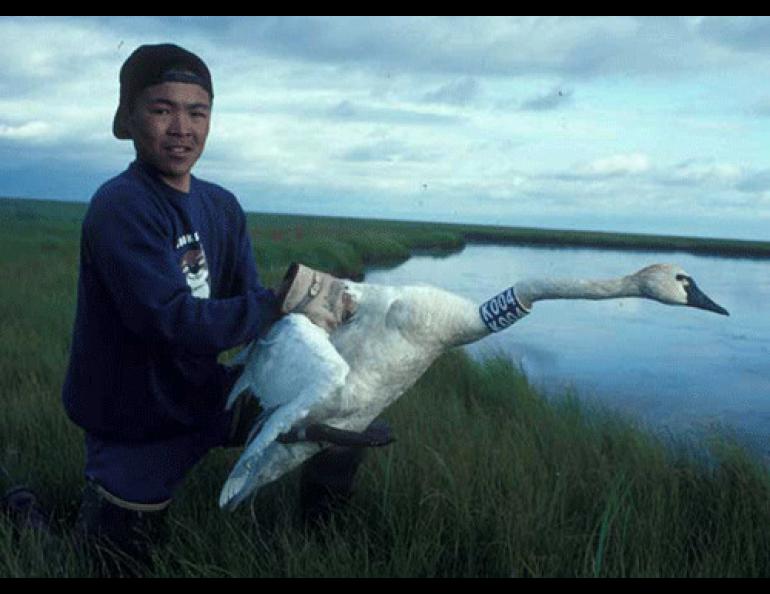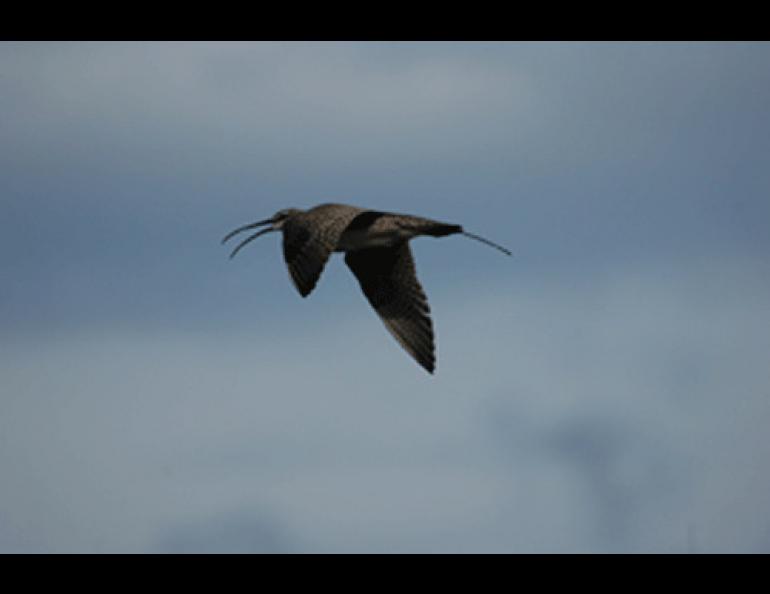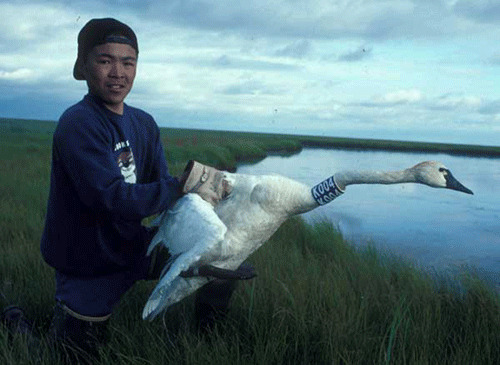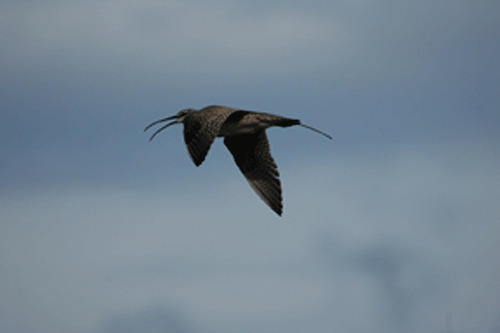

Birds blazing an electronic trail north during spring migration
During the next month, while many of us are sleeping, Alaska’s population will increase by millions. The migrant birds are returning, and, thanks to tracking technology that gets better each year, we know where some of them are.
A male whimbrel that’s probably headed to the Kanuti National Wildlife Refuge in Interior Alaska is now in alfalfa fields just south of the Salton Sea in northern Mexico.
“I think he’s putting on fat to do a nonstop flight from the Salton Sea to Alaska,” said Bob Gill of the U.S. Geological Survey Alaska Science Center in Anchorage.
The handsome shorebird with the long, curved beak spent the winter on an island off the coast of Chile. On March 23, the bird took off from the island and flew more than 5,000 miles, nonstop, to northern Mexico. At times, backed by stiff winds, the whimbrel flew more than 60 mph. Gill has been following its progress using a satellite transmitter he and others surgically implanted in the birds last summer.
“We’ve got three in the air right now,” Gill said. “We’re just riding some good luck with the batteries (which are lasting longer than expected).”
Another whimbrel with a working transmitter spent the winter in Ecuador and is currently near Bakersfield, California, almost ready to leap into the air and start for Alaska. The third is in Panama, also itching to head north.
“The birds showed up in Kanuti the last few days of April (last year),” Gill said, adding that he would expect them to appear in the Interior about the same time this year.
* * *
Several dozen tundra swans are transmitting their journey north, too. Craig Ely, also of the USGS Alaska Science Center, is part of a team that implanted satellite transmitters in tundra swans a few years ago. Those devices show that swans that wintered in the Pacific Northwest have already returned to their summering grounds near King Salmon, Alaska.
Swans that will spend their summers in the Yukon-Kuskokwim Delta and another group that prefers Kotzebue Sound are now in Alberta. Meanwhile, swans that congregate on the North Slope during summer are currently in the farm fields of Wisconsin. Ely expects the birds to arrive in Alaska around the same times they appeared last year — early May for the Yukon-Kuskokwim Delta and Kotzebue Sound birds, and late May for the North Slope birds.
* * *
Short-eared owls that spent last summer near Nome may not be on their way back, according to Jim Johnson of the U.S. Fish and Wildlife Service in Anchorage. Johnson and other biologists, including Luke DeCicco and Travis Booms of Fairbanks, fitted 14 short-eared owls with transmitter backpacks last summer, and the birds scattered as far south as Mexico.
Their transmitters were designed to last two years and are allowing Johnson to track the birds’ springtime movement.
“A bird that spent the winter just north of Denver began moving north a few days ago and is now in eastern Montana, about a 500-mile flight,” Johnson said.
Last fall, the owls impressed Johnson with how far they migrated, how they spread over western North America, and the routes they took. One bird flew from the Kenai Peninsula to Southeast Alaska, right over the Gulf of Alaska.
The farthest-north short-eared owl with a transmitter was, in mid-April, near Calgary. Johnson isn’t sure if the owls will return to Safety Sound outside Nome, or even to Alaska, because short-eared owls prefer to breed where there’s a good population of rodents.
“If the birds do migrate north to breed, we should see them on the move soon,” Johnson said. “They were starting to nest near Nome at the beginning of June last year.”






